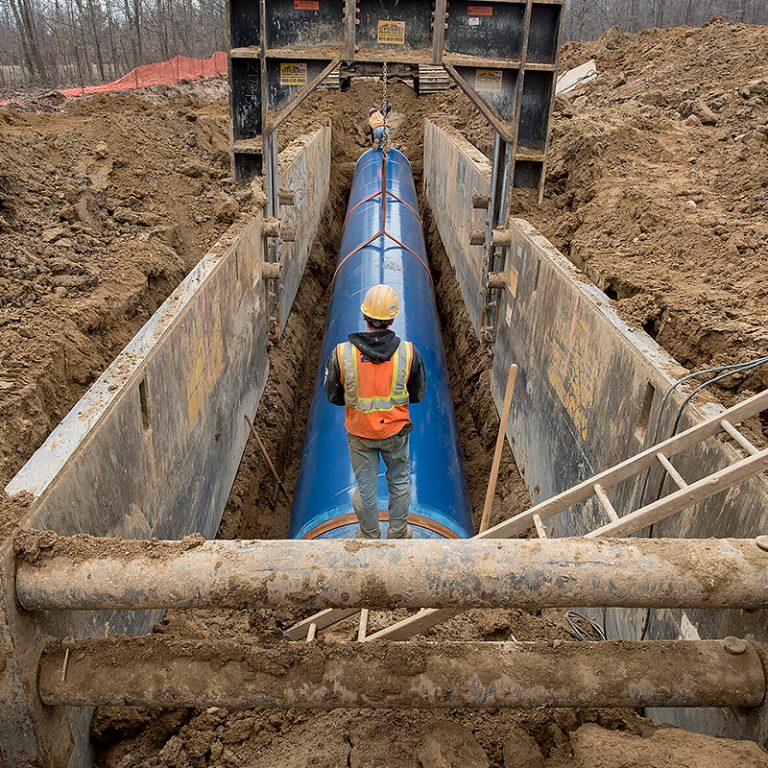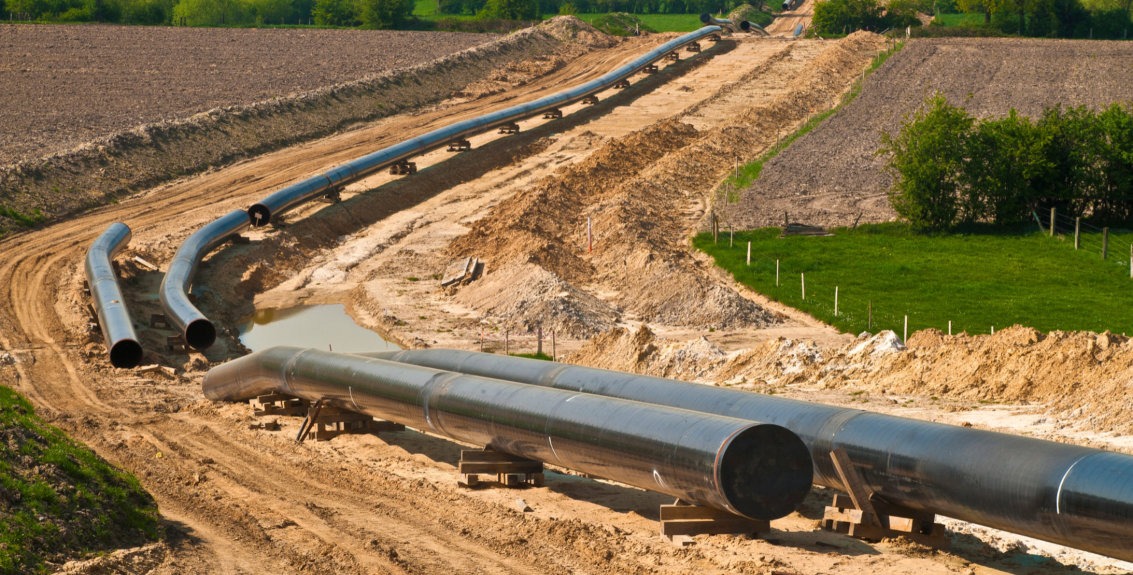Going Green With Creek Pipe HDPE installation Techniques
Wiki Article
Comprehending the Basics of Pipes Installation: What You Required to Find Out About the Process
Appropriate pipe installation is vital for any kind of plumbing system. It needs cautious consideration of numerous elements, including material selection and adherence to local laws. A well-planned format can prevent problems like stress loss, while the right tools ensure efficient joining strategies. Nevertheless, even experienced installers can make usual blunders. Recognizing these fundamentals can result in an extra effective and long lasting system, motivating a better check out the key aspects entailed in the process.Choosing the Right Materials for Pipe Installation
When considering pipe installation, the selection of appropriate materials is vital to guaranteeing toughness and performance. Numerous materials are offered, each offering one-of-a-kind advantages and considerations. For instance, PVC pipes are lightweight, immune to corrosion, and economical, making them perfect for household plumbing. On the other hand, copper pipelines, known for their long life and capability to withstand heats, are typically chosen for heating systems.Additionally, galvanized steel pipes supply strength and longevity, appropriate for sturdy applications, although they are prone to corrosion over time.For below ground installments, polyethylene pipelines are favored due to their versatility and resistance to stress breaking. Appropriate product option depends on the specific demands of the task, including pressure ratings, temperature variations, and the chemical nature of the fluids being delivered - Creek Pipe Texas oilfield. Inevitably, informed selections relating to pipe products add greatly to the overall success and longevity of plumbing systemsUnderstanding Local Building Codes and Laws
How can understanding local building codes and laws influence pipe installation? Familiarity with these codes is vital for guaranteeing that pipe installments are risk-free, compliant, and effective. Regional building codes describe specific needs regarding products, installation strategies, and safety and security actions, which must be stuck to in order to prevent possible lawful issues and costly fines.Failure to comply can lead to inspections being fallen short, delays in project conclusion, or even mandated elimination of incorrectly installed pipelines. Additionally, comprehending zoning laws and policies can affect the type of materials permitted, along with the techniques used for installation.Contractors and home owners alike ought to invest time in assessing local policies before starting any type of installation task. This positive technique not only promotes security however also improves the general high quality and sturdiness of the pipes system, ultimately cultivating lasting capability and contentment.Preparation Your Pipe Format and Style
Proper planning of pipe layout and design is necessary for attaining a reliable plumbing system. This process begins with evaluating the certain needs of the space, taking into account the place of fixtures and home appliances. Exact measurements assure that pipes are correctly transmitted, minimizing bends and turns that can cause push loss.Consideration of the flow prices and the kinds of materials utilized is crucial, as various products have differing resilience and compatibility with pipes systems. In addition, the developer ought to make up future expansions or adjustments to the design, permitting versatility in situation of renovations.Efficient drainage and ventilation are also considerable components of the layout, as they stop obstructions and guarantee proper waste elimination. Lastly, partnership with local structure codes ensures conformity and safety, which is extremely important in any kind of pipes installation project.Important Tools and Equipment for Installation
Effective pipe installation hinges on having the right tools and tools available. Essential devices include pipe cutters for tidy cuts, wrenches for tightening up fittings, and pliers for gripping and turning pipelines. In addition, a level guarantees pipelines are set up equally, while a determining tape aids in achieving exact lengths.For particular products, a soldering iron may be essential for copper pipelines, while a PVC cutter is crucial for plastic options. Security devices, such as handwear covers and safety glasses, shields installers from prospective risks during the process.A pipeline bender can be specifically valuable for producing smooth contours without jeopardizing honesty, while a torque wrench guarantees that links are secured to the maker's specifications.Having these tools conveniently available not only facilitates a smoother installation process yet additionally adds to the overall sturdiness and functionality of the plumbing system. Appropriate tools is vital in accomplishing durable results.Techniques for Appropriate Pipe Signing Up With and Sealing
Attaining a secure and leak-free connection in between pipelines requires careful interest to joining and securing strategies. Different techniques exist, each matched to different pipe products and applications (Creek Pipe HDPE installation). Welding is typically employed for metal pipes, ensuring robust links via warmth blend. In contrast, plastic pipes benefit from solvent cement or blend welding, producing solid, permanent bonds.Threaded links prevail in both metal and plastic piping, needing accurate alignment and using suitable sealants, such as Teflon tape or pipe dope, to avoid leaks. Compression installations use an additional alternative, where mechanical pressure secures the pipelines with each other, making them easily disassembled for maintenance.Regardless of the method chosen, appropriate prep work is necessary. This includes cleansing pipe finishes and guaranteeing they are devoid of particles. Executing these techniques carefully will boost the durability and reliability of the pipe system, inevitably adding to its effective performanceCommon Errors to Stay Clear Of Throughout Installation
During pipe installation, avoiding common mistakes is essential for guaranteeing a trusted and reliable system. One regular mistake is falling short to gauge and cut pipelines accurately, which can cause incorrect fittings and leaks. In addition, neglecting to check the compatibility of materials can result in deterioration or various other damages gradually. Incorrectly protecting joints and connections can also create powerlessness in the system, creating possible failures.Another usual blunder is ignoring the importance of slope and drainage; pipes must be installed at the appropriate angle to help with appropriate circulation. Insufficient support for pipes can lead to drooping and stress and anxiety, influencing the stability of the system. Eventually, disregarding local codes and regulations can lead to expensive rework and safety threats. By understanding these mistakes, installers can substantially improve the toughness and performance of pipe systems.Upkeep Tips for Resilient Pipe Systems
To assure the durability of pipe systems, regular assessments and cleaning are essential methods. These procedures help home identify possible concerns prior to they escalate into significant troubles. Additionally, using appropriate insulation methods can even more secure pipelines from temperature level changes and ecological variables.Regular Assessments and Cleaning
Regular assessments and cleansing are vital for keeping the longevity and efficiency of pipe systems. On a regular basis examining pipes for indications of rust, leakages, or clogs can aid identify potential problems prior to they escalate into expensive fixings. Cleaning pipelines periodically gets rid of accumulation that can restrict circulation and promote wear and tear. It is advisable to set up inspections at the very least yearly, but a lot more frequent checks may be necessary in high-usage settings. Utilizing professional solutions for extensive cleansing warranties that all debris is effectively cleared. Additionally, maintaining documents of assessments and maintenance tasks help in tracking the system's wellness gradually - Creek Pipe contact. By focusing on these methods, residential or commercial property proprietors can dig this improve the dependability and lifespan of their pipe systemsCorrect Insulation Methods
Effective insulation strategies play a crucial duty in preserving the effectiveness and long life of pipe systems. Correct insulation lessens heat loss in warm water pipes and prevents freezing in cold water pipes, considerably lowering energy expenses and potential damages. Common materials made use of for insulation include fiberglass, foam, and rubber, each offering differing levels of thermal resistance. It is crucial to guarantee that insulation is used uniformly, covering all revealed areas without spaces. In addition, protecting insulation with ideal fasteners aids maintain its setting and effectiveness gradually. Regular examinations ought to be performed to identify damage, guaranteeing timely substitutes. By executing these strategies, pipe systems can run effectively and have a prolonged life span, ultimately benefiting both the atmosphere and the home owner.Read Full Article

Frequently Asked Questions
Exactly how Do I Establish the Appropriate Pipe Dimension for My Task?
Determining the suitable pipe size includes reviewing the task's circulation needs, stress specifications, and the type of fluid being moved. Consulting design standards and conducting calculations guarantees perfect performance and effectiveness in the installation procedure.What Are the Ecological Impacts of Different Pipe Materials?

Can I Install Pipes Myself or Should I Hire an Expert?
The concern of whether to set up pipelines individually or hire a professional typically depends on the person's skill level and job intricacy. A professional might assure compliance with policies and minimize potential long-lasting problems.
For How Long Can I Anticipate My Pipe Installation to Last?
The durability of pipe installation differs substantially, commonly lasting 20 to 100 years, relying on products, installation high quality, and maintenance. Regular inspections and proper care can boost resilience and prevent early failings.
What Are the Signs of a Failing Pipe System?
Signs of a failing pipe system consist of constant leakages, unusual water pressure adjustments, blemished water, mold and mildew growth, and consistent dampness. Homeowners should monitor these indications to stay clear of costly damage and warranty timely repair work are made.Report this wiki page